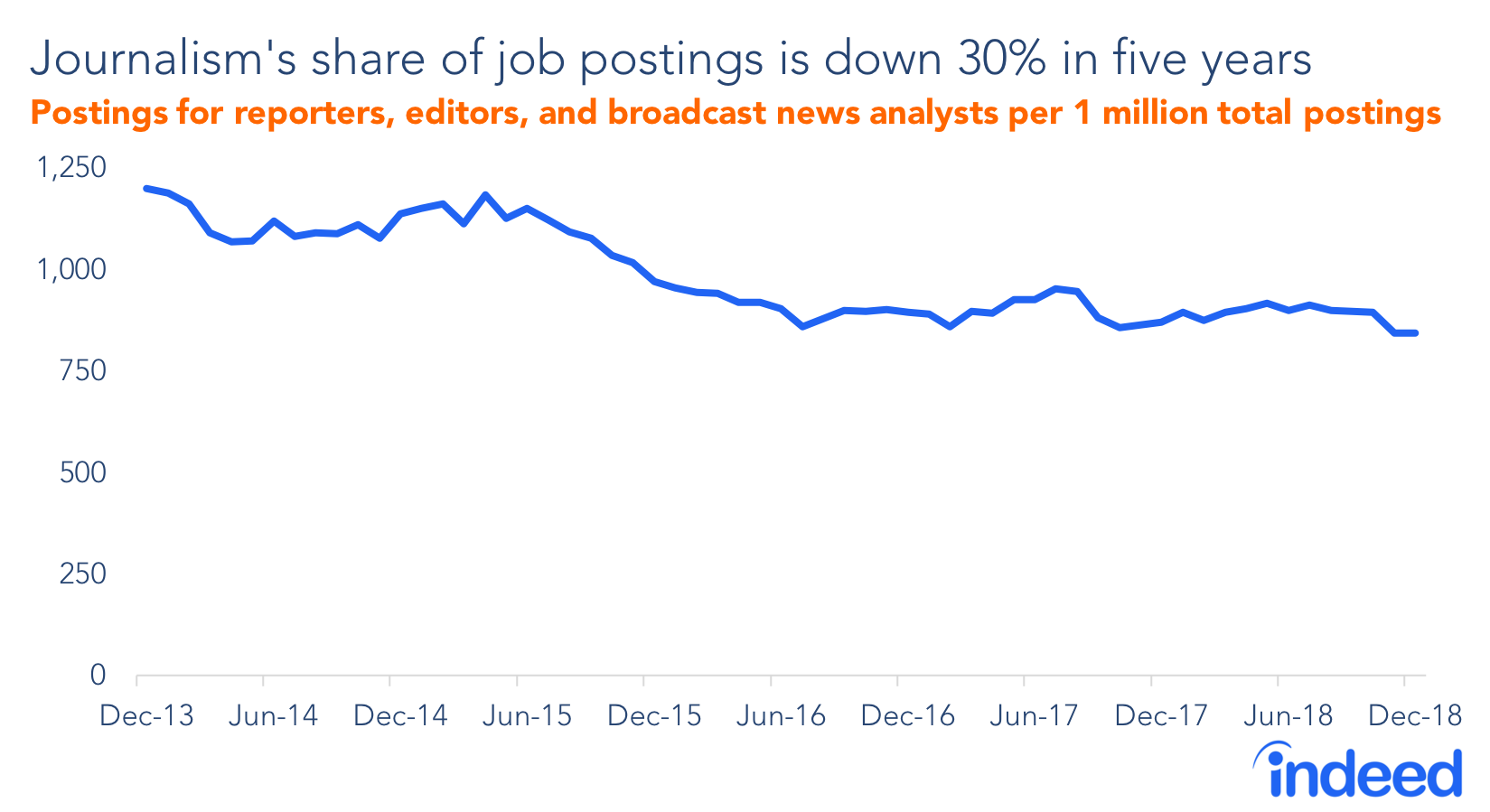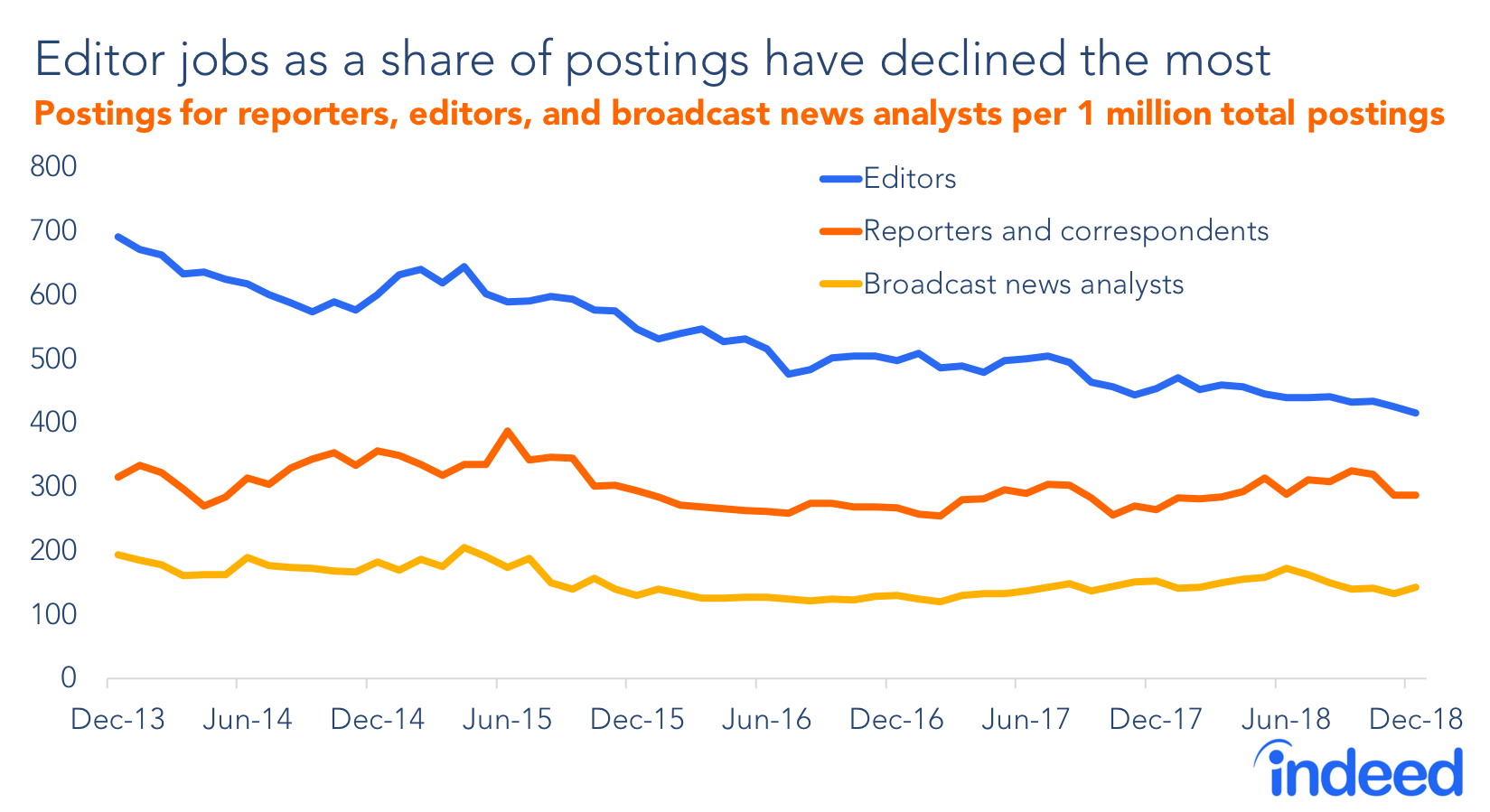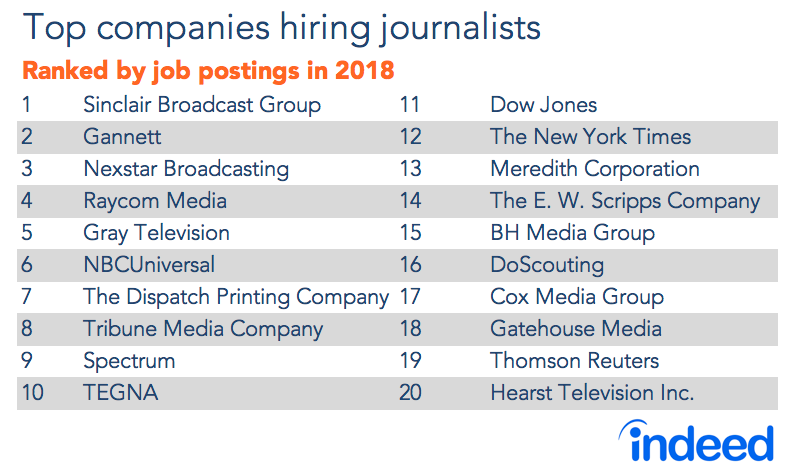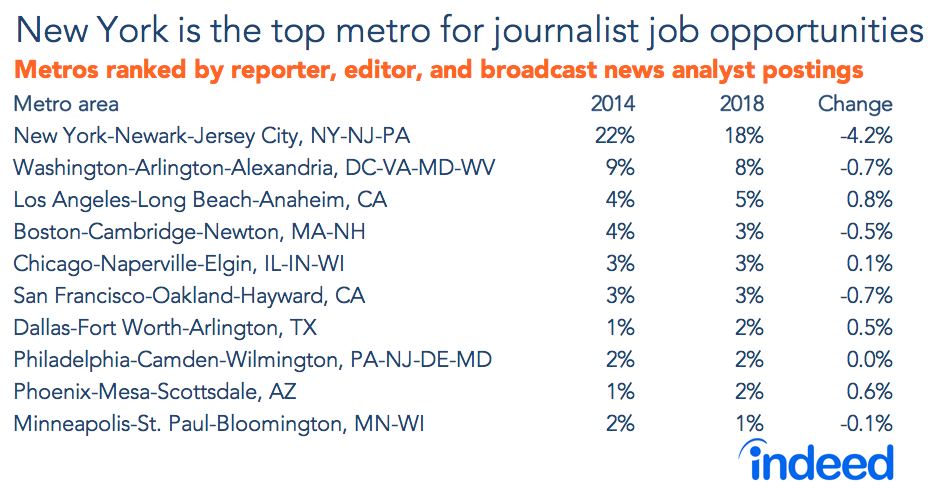Waves of layoffs have hit several print and digital newsrooms across the U.S. in the last month. The Dallas Morning News, BuzzFeed, Huffington Post, and Vice are some of the news outlets that have had to let go over 2,000 journalists. The state of journalism jobs seems dire.
This isn’t news for those in the news business. The Great Recession triggered massive job losses in journalism, and at newspapers in particular. Just last year the Pew Research Center used publicly-available data from the Bureau of Labor Statistics to estimate a decline of nearly 25% in newsroom employment between 2008 and 2017.
But new research from Indeed backs up and illuminates this worrisome trend. Journalism is in relative decline, with growth in journalism job postings lagging well behind overall postings growth during the last several years. Journalism postings as a share of all listings declined 30% on Indeed.com in the last five years through January 1, 2019. And the share of journalism postings fell 3% just last year as job postings overall continued to grow. (We look at the share of postings in order to net out any impact of changes in Indeed’s business on the overall trend).
The postings analyzed in this report are those that fell within core journalism occupations: reporters and correspondents, editors, and broadcast news analysts. (See methodology section for more details.)

Editor postings have seen the largest relative decline, with their share of all postings plummeting 40% over the five-year period. (See chart below.) The share of broadcast news analyst postings was nearly 26% lower. And the share of reporter and correspondent job postings declined 9%. Across the entire five-year period from 2013 to 2018, journalism job postings declined relative to the strong overall growth elsewhere in the labor market.
In some good news, in the year through December 2018, the share of postings for reporters and correspondents increased 8.5%. But because editors represent around half of all journalism postings, their sharp relative decline brought down the share of journalism postings overall.

Employment data from the government also shows declines overall, but with a somewhat different pattern in terms of the types of roles. According to the Bureau of Labor Statistics, reporter/correspondent and editor employment declined 14% and 2%, respectively, between 2011 and 2017. Broadcast news analyst jobs, however, rose nearly 10% over the same period. Job postings data reflect current opportunities, so in sectors with declining employment there may still be hiring due to turnover. One potential reason for editor roles declining less in terms of employment compared to their decline in postings might be due to reduced turnover for these roles.
Sinclair, Gannett top employers
The top company in terms of journalist job postings on Indeed.com in 2018 was Sinclair Broadcast Group. The giant conglomerate owns nearly 200 TV stations, covering 40% of American households. Despite the news about layoffs at Gannett, it had the second largest number of job postings in 2018. Gannett is the largest newspaper operator by circulation in the country, owning USA Today and numerous smaller papers. Some of the remaining top companies are broadcast news organizations, such as Nexstar Broadcasting, Raycom Media, and Gray Television. But newspapers are present too, including the Tribune Media Company and The New York Times.

New York largest market for journalist job postings, but declining in share
The New York metro area had by far the highest share of journalism job postings last year, at 18%. But, interestingly, New York’s share is down from 22% in 2014. Washington D.C. is second with 8% of job postings, and Los Angeles third at 5%. Los Angeles, Phoenix, and Dallas were metro areas with notable growth in the share of journalism job postings between 2014 and 2018. More generally, and contrary to common perception, it seems the share of journalism postings outside the top metro areas is growing.

It’s worth noting again that job postings are about new job opportunities, which is different than current employment. New job opportunities can come from both employment growth and turnover. In this case, it could be that turnover has become higher in journalism jobs outside the major metro areas. Journalists who land a job at one of the major national newspapers, for instance, are unlikely to want to move to a smaller paper given the precarious future for the industry.
Methodology
Online job postings on Indeed.com were analyzed for the five years from December 2013 to December 2018. Only English-language postings for the U.S. were considered. The core journalism occupational categories were chosen from Standard Occupational Classification (SOC) the Bureau of Labor Statistics. The 2010 SOC codes and occupational categories used as a proxy for journalism jobs in this analysis are:
- 27-3021: Broadcast News Analysts
- 27-3022: Reporters and Correspondents
- 27-3041: Editors






